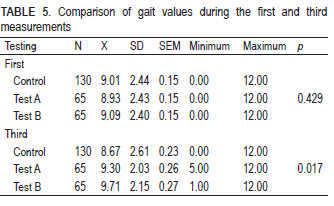The assessment of balance and gait after programmed therapeutic exercises in elderly
DOI:
https://doi.org/10.17532/jhsci.2022.1796Keywords:
Third age of life, balance, gait, therapeutic exerciseAbstract
Introduction: People over the age of 50 begin to show manifestations of reduced balance and instability, and as a result, simple activities such as standing or getting up from a chair may become limited or impossible. Therapeutic strengthening exercises can increase muscle strength and improve mobility, as well as the physical functioning of the elderly. The aim of this study was to evaluate therapeutic exercise on balance and gait in elderly.
Methods: The prospective study included two groups of 130 respondents over the age of 65 who had come to the “Center for Healthy Aging Novo Sarajevo.” Using the Performance-Oriented Mobility Assessment (POMA) test, we assessed mobility performance. We tested the respondents at the beginning, in the middle and in the end of the research, which lasted 6 months.
Results: In the control group, the required time increased by 2.04%. The largest improvement within POMA B was recorded in the examined Group B and it was 12.67 %, while in the examined Group A, the improvement was only 5.07%. Within POMA G, the largest improvement was also recorded in the examined Group B and it was 6.82%, while in the examined Group B, this improvement was 4.14%.
Conclusion: Both strengthening and antigravity therapeutic exercises improve the level of physical fitness in older adults, although therapeutic antigravity exercises had a better impact on the level of physical activity.
Downloads

Downloads
Published
License
Copyright (c) 2022 Bakir Katana, Arzija Pašalić, Eldad Kaljić, Samir Bojičić, Gordan Bajić, Sead Kojić, Dinko Remić, Hadžan Konjo

This work is licensed under a Creative Commons Attribution 4.0 International License.










